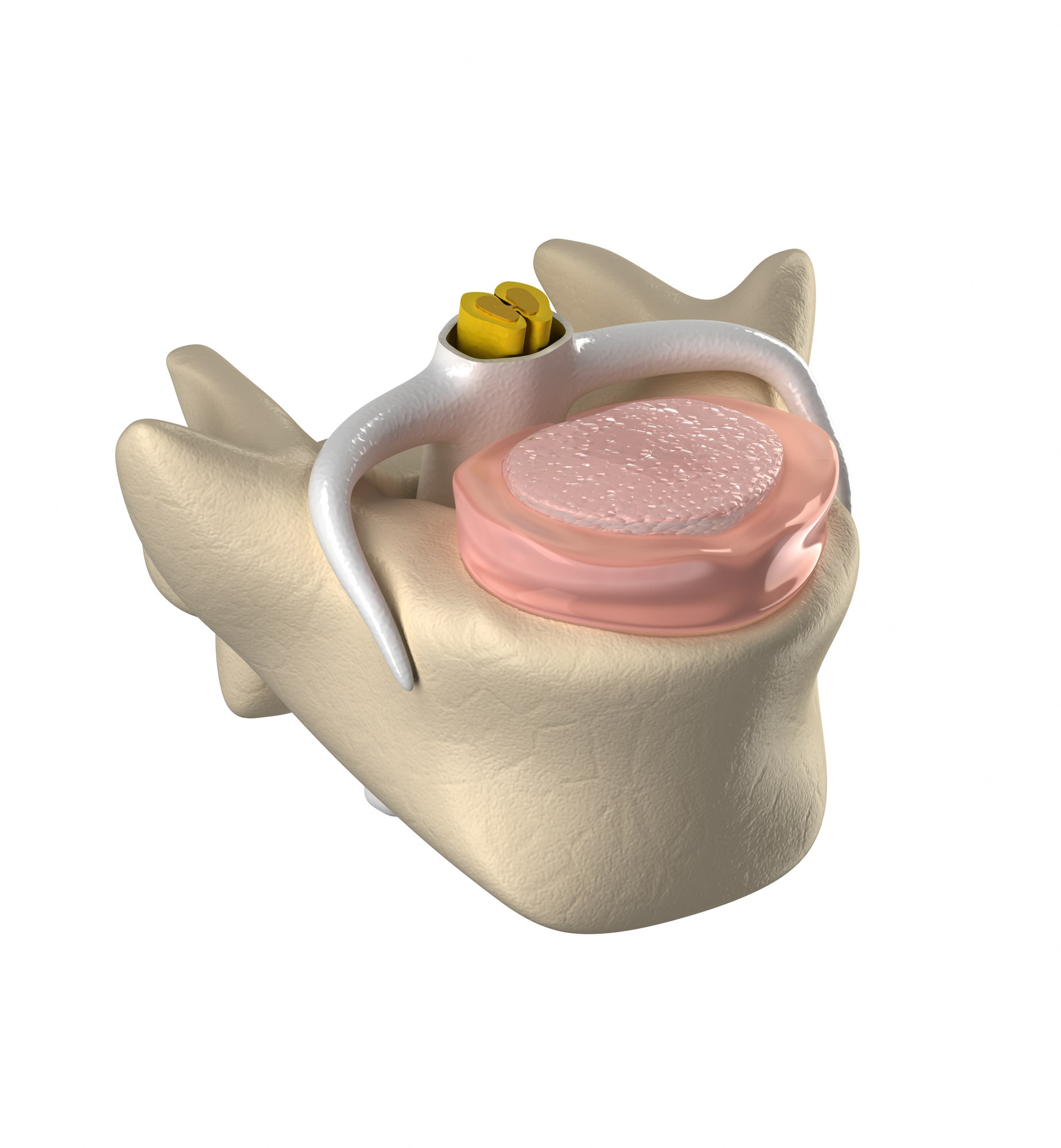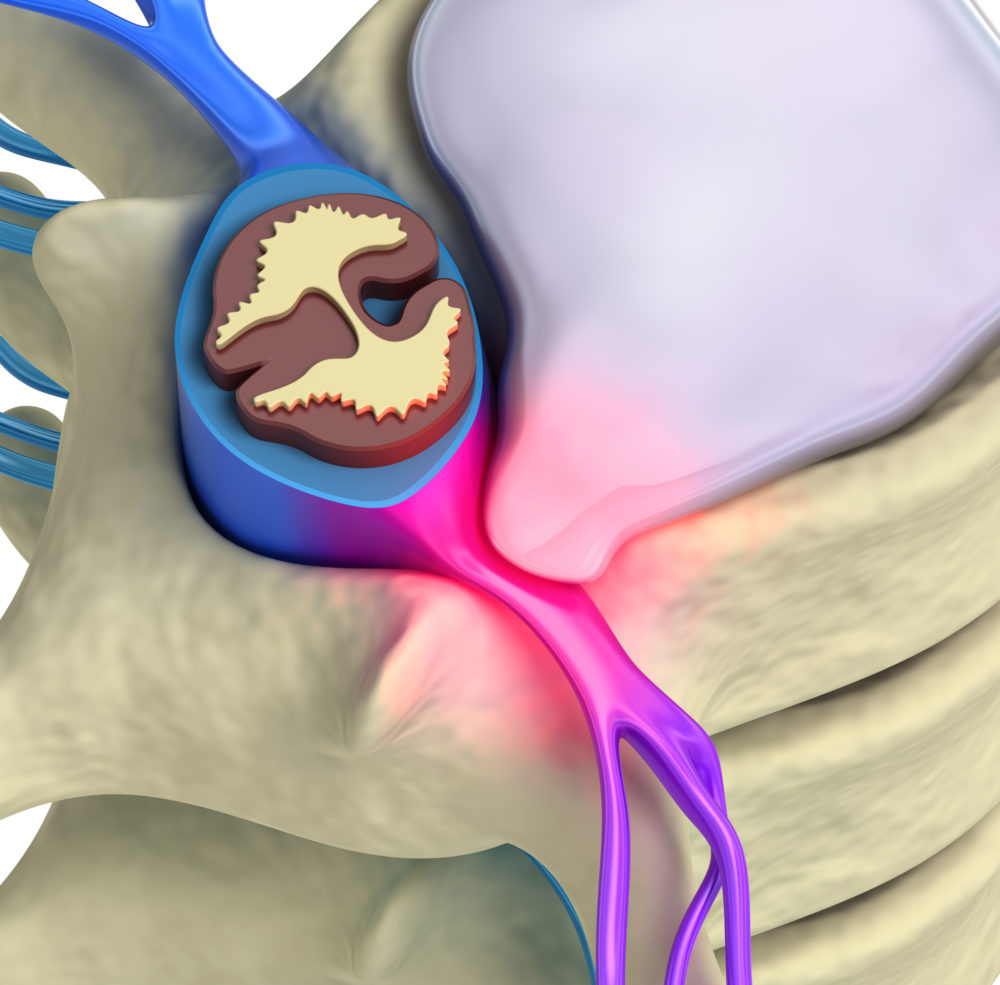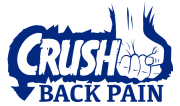Bulging disc exercises help discs heal
- By reducing forces through the posterior (back) part of the disc
- By optimizing core muscle contraction without excessive load through the lumbar spine
- By mobilizing the hips and stabilizing the lower back
Three exercises to start with
- Prone press-up
- Hip hinge
- Weighted walking
Check out this video to see the prone press-up and hip hinge
Prone Press-Up
The prone press-up is an important exercise for bulging discs because it works.
This exercise is tested and proven to reduce lower back pain caused by bulging discs.
The prone press-up extends the lumbar spine. Bulging discs are caused and exacerbated by lumbar flexion.
With the press-up the spine is taken in the opposite direction of flexion, into extension. Consequently this decreases the load through the posterior (back part) disc.
Less load through the posterior disc results in less pain, less inflammation, and less bulging.
Considering that most people spend most of their day in a seated position (lumbar flexion) simply extending the lumbar spine is especially important for overall back health.
If a bulging disc is causes pain it’s even more important to get the lower back extended and out of flexion.
Hip hinge
The hip hinge is an essential bulging disc exercise.
It can be trained as an exercise and must be used as the default movement pattern when sitting, standing, and bending forward.

The hip hinge minimizes compressive and shear forces through the lumbar spine, protecting the discs. 90% of the motion when bending forward should come from the hips. The hip hinge makes this happen.
If the lumbar spine is flexing excessively dozens of times every day while standing and sitting the best exercise program in the world will not be as effective as it could be.
Eliminating or at least minimizing repetitive microtrauma to the discs and other lumbar tissues is usually overlooked with low back pain exercise programs.
This needs to be a priority with every program because it’s the foundation to long-term pain relief and optimal function.
The hip hinge is the best place to start.
In addition to protecting the disc during repetitive movements the hip hinge requires the lumbar multifidus and erector spinae muscles to stabilize the lower back. This is important because stabilization during static and dynamic activity is the primary role these muscles play.
Weighted walking
The weighted backpack pulls your lumbar spine into extension, decreasing the tension through the paraspinal musculature.
The weight of the pack puts less force through your lower back than the tight paraspinal muscles. Less force through your bulging discs means less pain.
It helps to walk outside over uneven terrain. This helps load and unload the tissues in your lower back as you walk and facilitates the healing process.
Use these three bulging disc exercises to reduce pain and heal your lower back.
- Prone press up
- Hip hinge
- Weighted walking
Check out this Research Proven Method for another way to reduce pain and facilitate the healing process for bulging discs. It’s not even an exercise and can be incorporated into your routine tomorrow morning!
Make sure your lower back pain is from a bulging disc
Prior to starting any bulging disc exercises it’s prudent to make sure a bulging disc is causing the pain.
Bulging discs are common in people with and WITHOUT lower back pain. Subsequently, even if your lumbar MRI shows a bulging disc it could be an incidental finding.
What does bulging disc pain look like?
Disc pain is made worse with sitting for prolonged periods and bending forward. Difficulty straightening out and being “stuck” after sitting is consistent with disc involvement.
When symptoms are consistent with disc related pain these bulging disc exercises will be beneficial. If an MRI shows a bulging disc and symptoms are consistent with disc pain these exercises will be helpful.
Lumbar disc anatomy
The discs between the vertebrae are comprised of two parts. The annulus fibrosus and the nucleus pulposus.
The outer pink part is the annulus fibrosus. The inner pinkish part that is held in by the annulus in the nucleus pulposus.

The annulus fibrosus forms the outer layer of the disc and is made up of 15 to 25 stacked layers of collagen. Each layer is oriented 60 degrees from the layer adjacent to it. This orientation increases the strength of the disc while allowing flexibility. The annulus functions as a strong, rigid container to hold the nucleus pulposus in place. In addition to keeping the nucleus contained the annulus fibrosus also stabilizes the spine by resisting torsion, flexion, and extension.
The nucleus pulposus is a gel-like structure in the middle of the disc. It’s made of up water, collagen, and proteoglycans. 66% to 86% of the nucleus is water. The nucleus functions to spread forces out over the vertebrae above and below it, preventing excessive forces through one part of the vertebrae. Consequently the lumbar spine can move through considerable ranges and tolerate countless activities without compromising the vertebral bodies.
FAQ
What are the best exercises for bulging disc?
Exercises that minimize compression and tensile loading through the disc. Exercises that involve axial loading and hip motion/load sharing. Check out this list of the best exercises for a bulging disc.
- Dips
- Pull-ups
- Bird dog
- Side bridge
- Bridge
- Forward alternating lunge
- Reverse alternating lunge
- Walking lunge
- Lateral lunge
- Fast walking
- slow running/jogging
- Cossack squat
Check out Safe Exercises to do With a Herniated Disc for more in depth information on bulging disc exercises.
What exercises can I do with a bulging disc?
Exercises that extend the lumbar spine, facilitate hip hinging, engage the trunk musculature, and promote lumbar stabilization are the best for bulging discs.
There are a variety of different exercises and movements that match these criteria. The best place to start is with some videos. Some of the videos are titles for herniated discs.
A herniated disc just means the inside of the disc has pushed out some through the outer layer of the disc.
With a bulging disc the inner layer has not pushed through the outer layer. The same types of exercises are effective for bulging discs and herniated discs because they are basically the same condition along a spectrum.
Start with Three Herniated Disc Exercises to Relieve Your Pain and Heal Your Disc.
Next check out Herniated Disc Exercise Progressions.
Once you’ve mastered the herniated disc exercise progressions look into Powerful Bulging Disc Exercises that Destroy Pain.
Walking is a proven, effective exercise for herniated discs. Unfortunately it’s often overlooked. Walk This Way…For Lower Back Pain Relief outlines the best way to walk if you have a herniated disc.
Weighted Walking for Bulging Discs is another proven exercise that decreases pain related to bulging and herniated discs.
What exercises help bulging disc?
Exercises that strengthen and stabilize the lumbar spine in a neutral position help bulging discs heal.
Exercises that extend the lumbar spine are help decrease bulging disc pain.
Basically exercises that DON’T repeatedly flex the lumbar spine or load the lumbar spine in flexion are good.
The exercises outlined in Herniated Disc Exercises: Jumpstart Healing, Erase Pain help bulging discs heal and decrease pain.
Powerful Bulging Disc Exercises that Destroy Pain outlines some excellent exercises for bulging discs.
Weighted Walking for Bulging Discs is a counterintuitive method that is proven to reduce lower back pain related to bulging discs.
What exercises to avoid with a bulging disc?
Avoid exercises that flex the lumbar spine to end-range. Avoid exercises that flex the lumbar spine repeatedly.
Avoid loading the lumbar spine in a flexed position. Lumbar flexion increases the stress and strain through the back part of the disc, where it bulges.
Essentially lumbar flexion can exacerbate a bulging disc.
Herniated Disc? Quit These Exercises Today outlines lumbar flexion and common exercises that flex the lumbar spine excessively.



